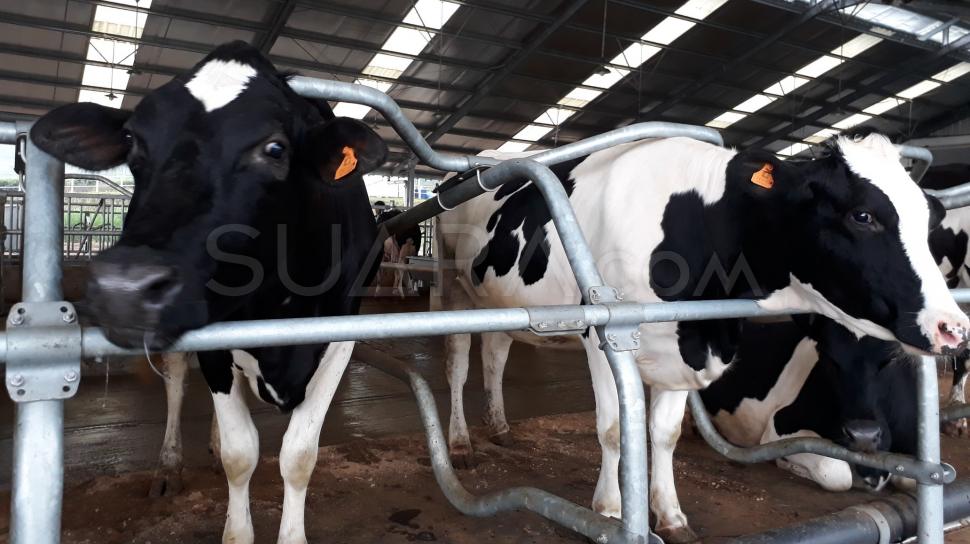Milk borne disease (MBD) is a serious problem in the public health sector which can be caused by a variety of pathogenic bacteria, one of them is Staphylococcus aureus. These opportunistic pathogens that are often found in humans and animals can cause a diverse spectrum of diseases from minor skin infections to systemic diseases such as pneumonia and meningitis. Some researchers suggest that S. aureus can be transmitted to humans through contamination of milk, unprocessed milk, and milk products. S. aureus is commonly found in the skin and mucosa of ruminants, which have sub-clinical or clinical mastitis which is a source of contamination in dairy products.
A research report reveals that the presence of multiple antibiotic resistance from S. aureus creates new problems for health practitioners and researchers. There are studies on phenotypic and genotypic antibiotic resistance stating that since 1962 methicillin-resistant Staphylococci (MRS) have been found and the first case of methicillin-resistant Staphylococcus aureus (MRSA) has occurred in humans but has now been detected in animals. MRSA resistance to beta-lactam antibiotics is caused by various mechanisms, one of them is the production of unusual penicillin-binding protein (PBP), which forms PBP2 thereby weakening the affinity for the antibiotic β-lactam expressed by the mecA. MecA gene detection using the polymerase chain reaction (PCR) method is the gold standard for detecting MRSA, but cannot be done in all clinical laboratories due to various facilities, capabilities and costs. The difficulty of using PCR in an effort to detect the presence of MRSA can be reduced by using Cefoxitin disc diffusion, Oxacillin disc diffusion combination of Oxacillin Resistance Screen Agar (ORSA).
The purpose of this study was to detect and evaluate the level of MRSA contamination in dairy cow milk in East Java and to compare the phenotypic detection method using screening with Cefoxitine disc diffusion, Oxacillin disc diffusion combination of Oxacillin Resistance Screen Agar (ORSA) and confirm genotypically using PCR to detect the MecA gene. The sensitivity and specificity of the test will show the effectiveness and ease of application of the MRSA strain detection method. Also, this research information is very important to support strategic and technical decision making by relevant institutions for mitigation and prevention of impacts on aspects of public health in food safety.
Milk-borne diseases (MBD) are problems that must be controlled in the public health sector as they do not only affect human health but also have an impact on the economic sector. Research on antimicrobial drug resistance of S. aureus reports that related dairy product contamination is not only limited to developing countries but also occurs in developed countries. Some researchers report that bacterial outbreaks in milk and dairy products in countries going around 2-6%. Improper food handling and unhygienic practices during the production process, packaging to distribution have a significant role in the occurrence of food poisoning. Another researcher stated that cow’s milk can transmit various pathogens including Staphylococci strains.
Staphylococcus aureus is a pathogenic agent that can cause various infectious diseases from cutaneous to systemic infections in immunocompetent hosts, resulting in death. In this study, out of 150 milk samples, 61% S. aureus contamination was detected. This study has a purposive design conducted specifically to detect the presence of Staphylococci strains in dairy cows farms that have low hygiene milking thereby increasing the potential for contaminants in cow’s milk. In this regard, research in North India states that differences in the number of isolates found can be influenced by differences in study design such as population and geographic distribution of samples, types of antibiotics used, and infection control practices.
In this study, it can be concluded that the presence of milk contamination by MRSA can be caused by various factors, one of which is low hygiene milking. Besides, MRSA contamination is very dangerous for public health, which will increase the potential spread of Staphylococcal infection which is difficult to treat. So there is urgency for clinical microbiology identification to be able to do accurate, rapid and cost-effective identification of MRSA contamination in transmission media such as food from animal origin. Genotypic detection using PCR to detect the presence of the mecA gene is the golden standard of MRSA detection, but in a laboratory that unable to do molecular testing can use Cefoxitin disk diffusion as a marker for MR detection. This is based on the ability of the Cefoxitin disc diffusion test in detecting mecA gene expression so that it can be a solution as an MRSA screening instrument more effectively and efficiently in cost, technical applications, and media preparation.
Author: Dr. Mustofa Helmi Effendi, drh., DTAPH
Details of this research can be viewed at: https://smujo.id/biodiv/article/view/6088
Ramandinianto, S.C., Khairullah, A.R., Effendi, M.H. 2020. MecA gene and methicillin-resistant Staphylococcus aureus (MRSA) isolated from dairy farms in East Java, Indonesia. BIODIVERSITAS, 21(8): 3562-3568.





